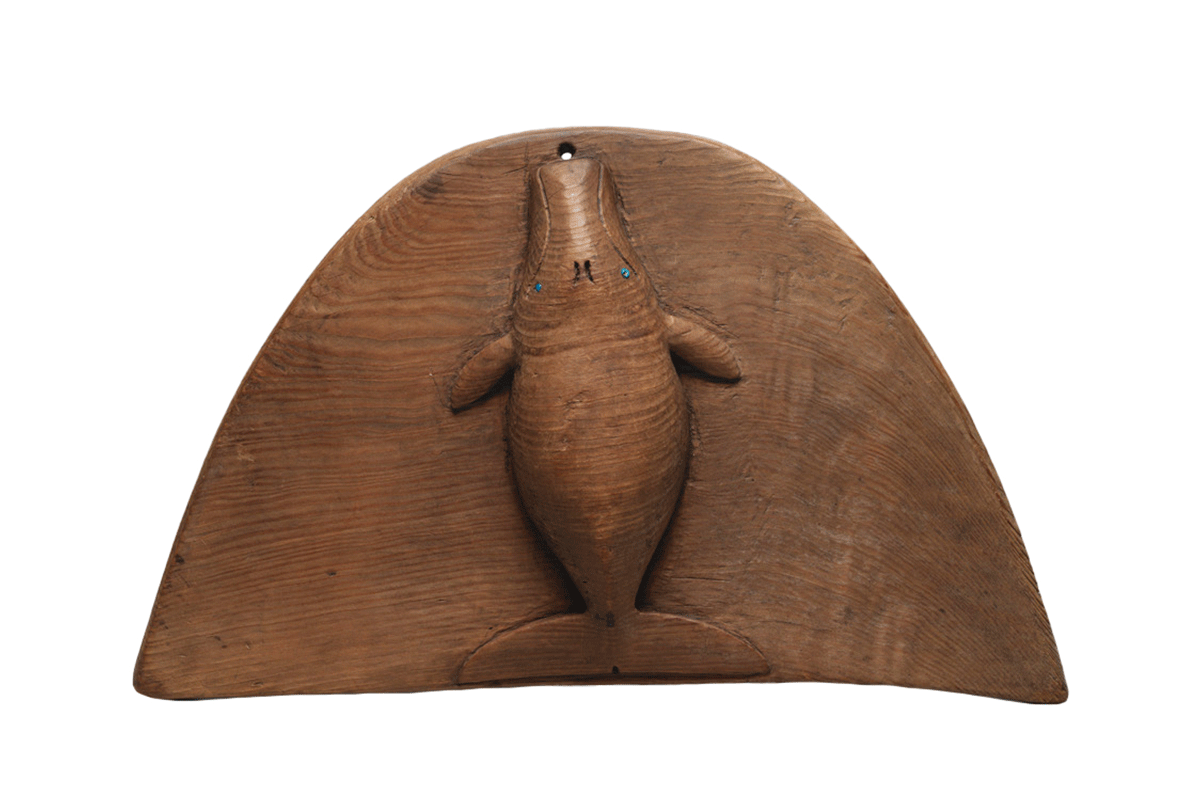Whale Charm
Northwest Alaska
ca. 1860
wood, glass beads
width: 15"
Inventory # E4180
Sold
Fastened to the bow of the Umiak, these charms were believed to attract whales to the hunter’s craft (Fitzhugh, 1988)
PROVENANCE
Private collection, Seattle, WA
RELATED EXAMPLES
National Museum of Natural History, Smithsonian Institution, Washington, Cat. No. 89817 - See: Fitzhugh, William, Crowell, Aron. Crossroads of Continents: Cultures of Siberia and Alaska. Washington: Smithsonian Institution, 1988, pg. 168, pl 209 (right)
Field Museum of Natural History, Chicago, Cat. No. 53424 – See: Ray, Dorothy Jean. Eskimo Art: Tradition and Innovation in North Alaska. Seattle: University of Washington Press, 1977, pg. 92, fig. 21
University Museum, Philadelphia, Cat. No. NA 4788 – See: Collins, Henry B. De Laguna, Frederica. Carpenter, Edmund. Stone, Peter. The Far North: 2000 Years of Eskimo and Indian Art. Washington: National Gallery of Art, 1973, pg. 70, fig. 87
The bowhead whale was the most important source of food for the Inupiaq speaking people of northwestern Alaska. As a result, elaborate rituals developed around the whale hunt to ensure the bounty of the harvest and the safety of hunters. The failure of a village to successfully capture a whale could result in starvation or the resettlement of an entire community. This sensitively carved plaque would have been affixed to the bow of the hunter’s umiak to attract whales to his craft.


